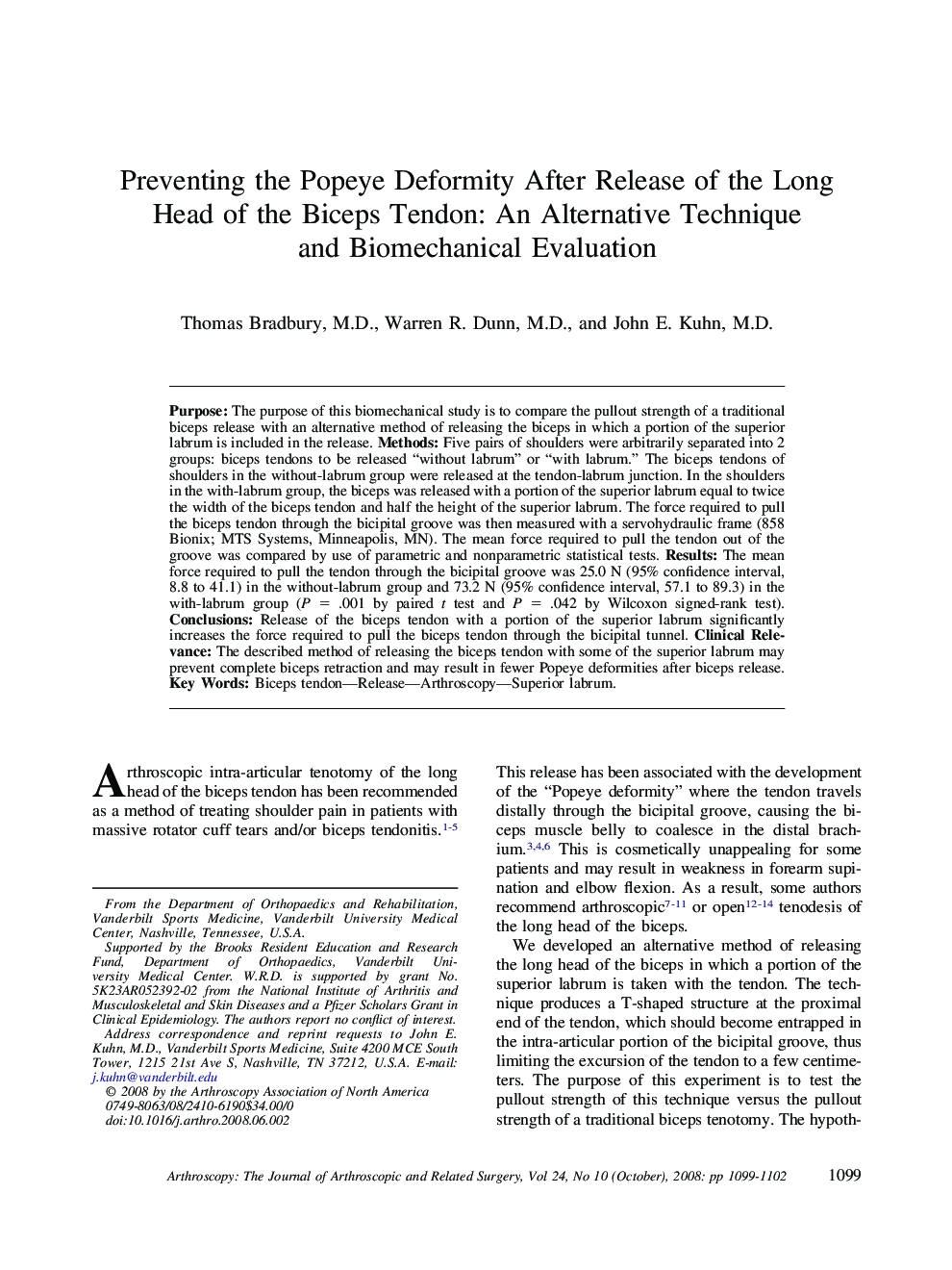| Article ID | Journal | Published Year | Pages | File Type |
|---|---|---|---|---|
| 4046537 | Arthroscopy: The Journal of Arthroscopic & Related Surgery | 2008 | 4 Pages |
Purpose: The purpose of this biomechanical study is to compare the pullout strength of a traditional biceps release with an alternative method of releasing the biceps in which a portion of the superior labrum is included in the release. Methods: Five pairs of shoulders were arbitrarily separated into 2 groups: biceps tendons to be released “without labrum” or “with labrum.” The biceps tendons of shoulders in the without-labrum group were released at the tendon-labrum junction. In the shoulders in the with-labrum group, the biceps was released with a portion of the superior labrum equal to twice the width of the biceps tendon and half the height of the superior labrum. The force required to pull the biceps tendon through the bicipital groove was then measured with a servohydraulic frame (858 Bionix; MTS Systems, Minneapolis, MN). The mean force required to pull the tendon out of the groove was compared by use of parametric and nonparametric statistical tests. Results: The mean force required to pull the tendon through the bicipital groove was 25.0 N (95% confidence interval, 8.8 to 41.1) in the without-labrum group and 73.2 N (95% confidence interval, 57.1 to 89.3) in the with-labrum group (P = .001 by paired t test and P = .042 by Wilcoxon signed-rank test). Conclusions: Release of the biceps tendon with a portion of the superior labrum significantly increases the force required to pull the biceps tendon through the bicipital tunnel. Clinical Relevance: The described method of releasing the biceps tendon with some of the superior labrum may prevent complete biceps retraction and may result in fewer Popeye deformities after biceps release.
